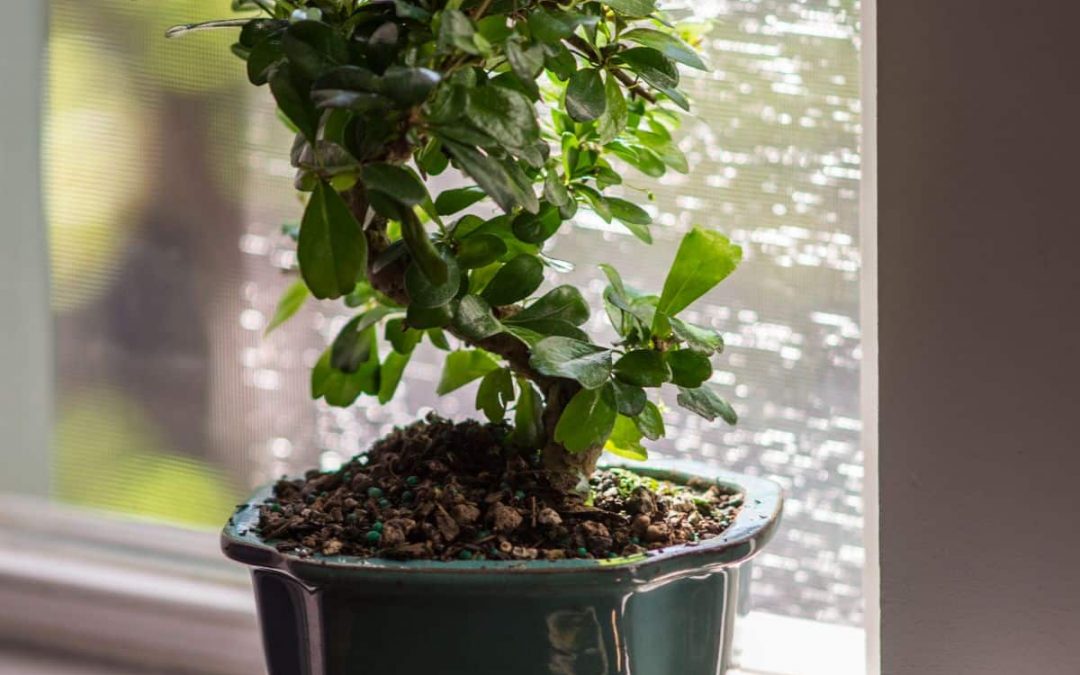How to Use Humidity Trays for Houseplants (Beginner’s Guide)
Many houseplants, especially tropical varieties, struggle in homes with dry air. Central heating and air conditioning lower humidity, which leads to crispy brown leaf tips, curling leaves, or stunted growth. One of the easiest and most affordable ways to combat this problem is with a humidity tray. In this guide, we’ll explain what humidity trays are, how to use them correctly, which plants benefit most, and how they compare to other methods of boosting humidity.
What Is a Humidity Tray?
A humidity tray is a shallow tray filled with water and pebbles that sits beneath your plant pot. As the water evaporates, it raises the humidity around the plant. This creates a localized zone of moisture that helps plants thrive in dry indoor conditions.
Unlike misting, which only boosts humidity for a few minutes, humidity trays provide a steady, long-lasting increase in moisture levels throughout the day.
A humidity tray on Amazon is both practical and visually appealing, making it a useful addition to your plant display.
Benefits of Using a Humidity Tray
Adding a humidity tray to your setup has multiple advantages:
Prevents brown leaf tips – Keeps foliage lush and healthy.
Improves local air quality – Creates a microclimate perfect for tropical plants.
Supports flowering plants – Helps orchids and anthuriums hold blooms longer.
Low maintenance – Requires less attention than daily misting.
Affordable and eco-friendly – Reusable and long-lasting solution.
How to Set Up a Humidity Tray
Setting up a tray is simple and takes just minutes:
- Select a shallow tray slightly wider than your plant pot.
- Add a layer of pebbles, stones, or clay balls.
- Fill the tray with water until just below the surface of the pebbles.
- Place your plant pot on top, ensuring the base doesn’t touch the water.
- Refill as needed, usually every few days.
Which Plants Benefit Most?
While almost all houseplants enjoy extra humidity, certain species thrive with it:
Calatheas and ferns – Prevent crispy edges and keep leaves vibrant.
Orchids – Support healthy root systems and flowering.
Peace lilies and anthuriums – Reduce stress and leaf curl.
Herbs like basil and mint – Stay fresher and grow stronger.
For large plant groups, a wide humidity tray for houseplants on Amazon can provide moisture for multiple pots at once.
Humidity Trays vs Other Solutions
Humidity trays aren’t the only way to improve plant conditions. Here’s how they compare:
Misting – Quick but temporary. Humidity trays last longer with less effort.
Humidifiers – Raise humidity in entire rooms but require power and regular cleaning.
Grouping plants – Increases local humidity naturally, but not as effective as a tray.
Humidity trays strike a balance between cost, effectiveness, and ease of use, making them ideal for beginners.
Common Mistakes to Avoid
Letting roots sit in water – Always keep pots elevated above the waterline.
Forgetting to clean the tray – Wash pebbles regularly to prevent algae buildup.
Expecting whole-room changes – Trays improve local humidity only.
Overfilling with water – Excess water may cause mold or fungus growth.
FAQs About Humidity Trays
Q: Do humidity trays replace humidifiers?
A: No, but they’re a great low-cost alternative for individual plants.
Q: How often should I top up the water?
A: Usually every 3–5 days, depending on airflow and room temperature.
Q: Can I make my own humidity tray?
A: Yes, any shallow dish filled with pebbles can work as a DIY version.
Final Thoughts on Humidity Trays
Humidity trays are one of the easiest upgrades for healthier houseplants. They provide a steady boost of moisture, reduce brown tips, and help tropical plants thrive in dry indoor environments. While they won’t replace a humidifier for whole-room coverage, they’re a simple, affordable solution for beginners.
If you’re noticing signs of dryness, adding a humidity tray is the first step toward creating a healthier growing environment. Combine them with other tools like fans or grow tents for even better results.
For more information on plant humidity and care, you can check the Royal Horticultural Society’s houseplant care advice.

